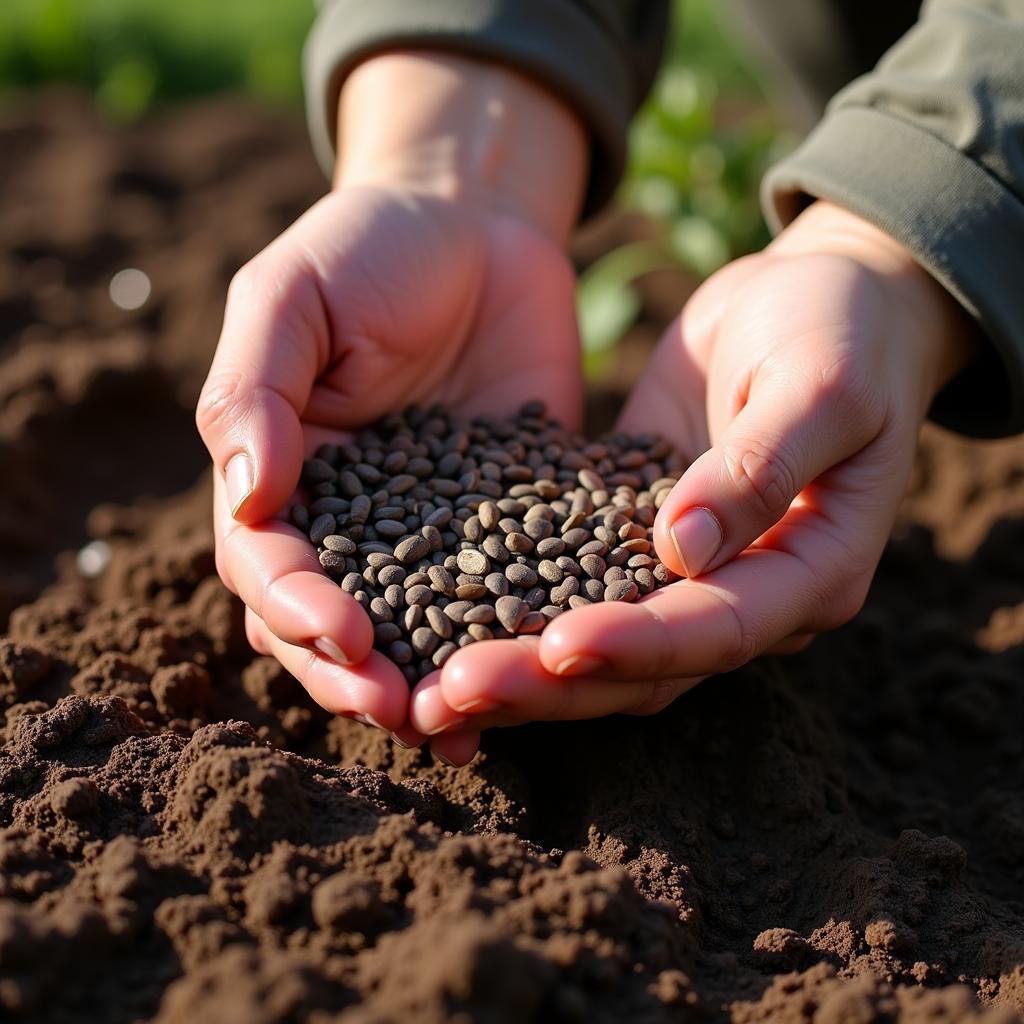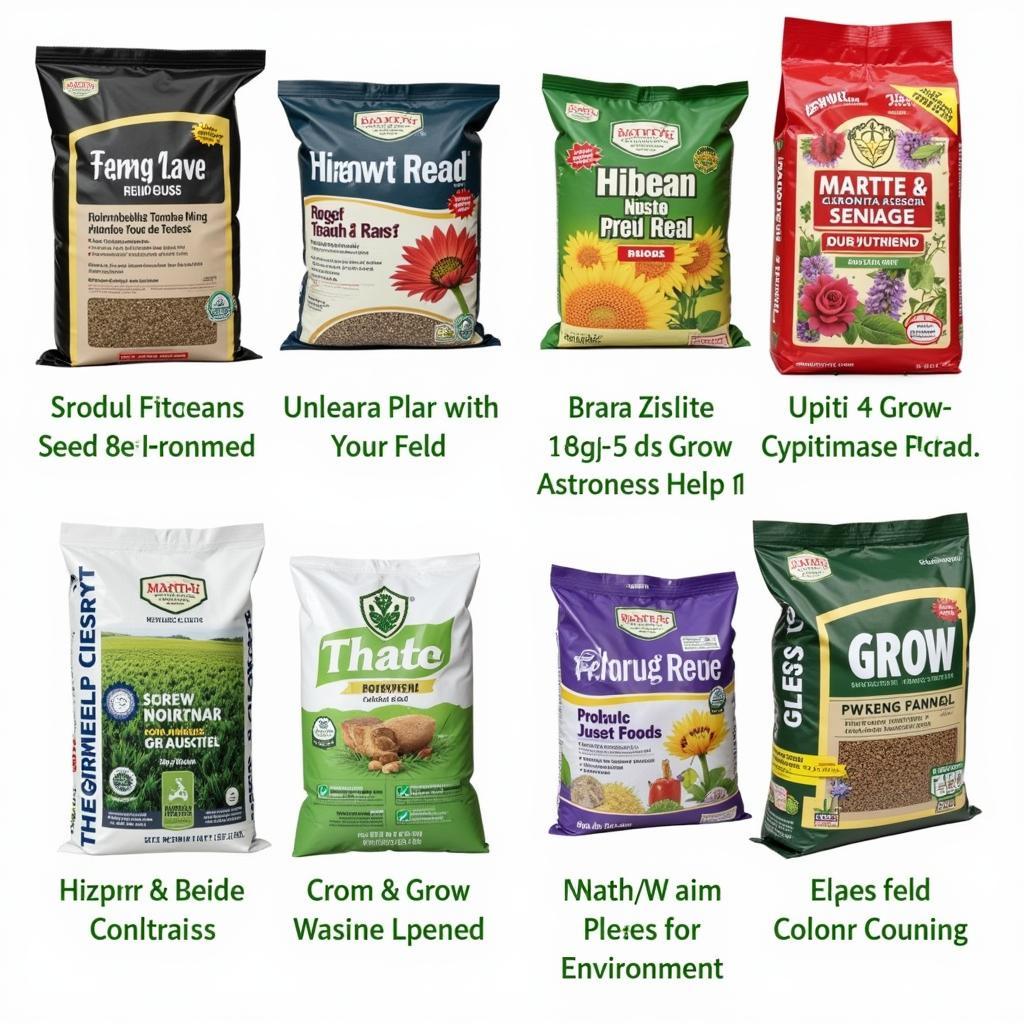Throw and grow food plots have gained popularity among hunters and wildlife enthusiasts seeking a convenient way to attract deer and other game. But do these seemingly effortless seed blends live up to the hype? This comprehensive review dives into the world of throw and grow food plots, examining their effectiveness, pros, cons, and providing valuable insights from real-world experiences.
Understanding Throw and Grow Food Plots
Throw and grow food plots are designed for ease of establishment. They typically consist of a blend of seeds that are broadcast onto the soil, often without the need for extensive soil preparation like tilling or discing. The concept is simple: throw the seeds, let nature take its course, and watch a thriving food plot emerge. But how effective are they in reality?
Examining the Effectiveness of Throw and Grow Plots
The effectiveness of throw and grow food plots varies depending on factors like soil type, climate, seed blend, and existing vegetation. While these plots can be successful in ideal conditions, they often face challenges in areas with heavy weed pressure, poor soil quality, or insufficient moisture. In some cases, additional soil preparation or weed control measures may be necessary to achieve satisfactory results.
Factors Influencing Success
- Soil Type: Well-drained soils with a pH between 6.0 and 7.0 are ideal for most throw and grow seed blends.
- Climate: Adequate rainfall and appropriate temperatures are crucial for seed germination and growth.
- Seed Blend: Choosing a seed blend that is adapted to the local climate and soil conditions is essential.
- Weed Control: Pre-emergent herbicides can help control weed competition, particularly in areas with heavy weed pressure.
 Throw and Grow Food Plot Soil Preparation
Throw and Grow Food Plot Soil Preparation
Pros and Cons of Throw and Grow Food Plots
Throw and grow food plots offer several advantages, but they also come with limitations. Understanding these pros and cons can help you make informed decisions.
Advantages
- Convenience: Minimal soil preparation and easy broadcasting make these plots a convenient option for busy individuals.
- Cost-Effective: Throw and grow seed blends are often less expensive than traditional food plot seed mixes.
- Time-Saving: The reduced need for tilling and discing saves significant time and effort.
Disadvantages
- Weed Competition: Throw and grow plots are susceptible to weed competition, especially in areas with established weed populations.
- Limited Success in Poor Soil: Poor soil quality can hinder seed germination and growth, reducing the effectiveness of these plots.
- Dependence on Rainfall: Inconsistent rainfall can negatively impact the establishment and growth of throw and grow food plots.
Throw and Grow Food Plot Reviews: Real-World Experiences
To gain a better understanding of the performance of throw and grow food plots, we reached out to experienced hunters and wildlife managers. Here are some of their insights:
“Throw and grow plots can be a useful tool, but they’re not a magic bullet. Proper site selection and some degree of soil preparation are still important for achieving good results.” – John Peterson, Wildlife Biologist
“I’ve had mixed results with throw and grow plots. In areas with decent soil, they’ve done well. But in areas with heavy weed pressure or poor soil, I’ve been disappointed.” – David Miller, Experienced Hunter
“For small, quick plots, throw and grow can be a great option. But for larger, more permanent food plots, I prefer traditional planting methods.” – Sarah Johnson, Wildlife Manager
Choosing the Right Throw and Grow Seed Blend
Selecting the appropriate seed blend is crucial for maximizing the success of your throw and grow food plot. Consider factors like the target species, local climate, and soil conditions when making your choice.
 Selecting Throw and Grow Seed Blend
Selecting Throw and Grow Seed Blend
Conclusion
Throw and grow food plots offer a convenient and cost-effective option for attracting wildlife. While they can be successful under the right conditions, understanding their limitations and implementing proper strategies can greatly enhance their effectiveness. By carefully considering factors like soil type, climate, seed selection, and weed control, you can increase your chances of establishing a thriving food plot that attracts and sustains wildlife. So, do your research and choose wisely, and your Throw And Grow Food Plot Reviews might just be filled with success stories.
FAQ
- What is the best time to plant throw and grow food plots?
- Do throw and grow food plots require fertilizer?
- How can I control weeds in a throw and grow food plot?
- What are the best seed blends for throw and grow food plots?
- Can I use throw and grow food plots in shaded areas?
- How long does it take for a throw and grow food plot to establish?
- Are there any specific legal requirements for establishing food plots in my area?
Need support? Contact us at Phone: 02437655121, Email: [email protected] Or visit us at: 3PGH+8R9, ĐT70A, thôn Trung, Bắc Từ Liêm, Hà Nội, Việt Nam. We have a 24/7 customer service team.